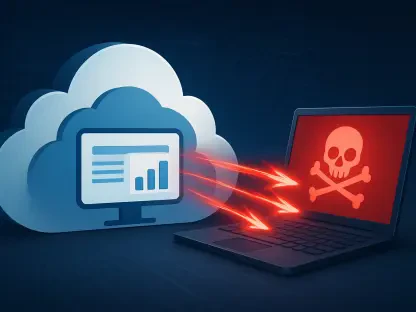Shadow engineering, a term used to describe the use of unsanctioned, untracked tools, code repositories, or processes by developers, is a growing concern within many organizations. This behavior commonly stems from pressures to increase application release velocity and the absence of sufficient guardrails and standardized paths. While the immediate benefits of shadow engineering may include faster development and deployment times, the long-term implications can be severe, posing significant risks to security, compliance, and risk management. Addressing these concerns requires a comprehensive understanding of the phenomenon and a strategic approach to mitigate its adverse effects.
Understanding Shadow Engineering and Its Implications
Shadow engineering often happens under the radar, making it difficult for organizations to track and manage the tools and processes used by their development teams. Developers turn to unauthorized methods and shortcuts when existing sanctioned processes are perceived as too slow, cumbersome, or restrictive. This issue is further exacerbated when organizations lack standardized paths or clear guidelines that offer both speed and security. Such practices can result in crucial gaps in the software supply chain, leaving the organization vulnerable to cyber-attacks, data breaches, and regulatory fines.The compliance aspects of shadow engineering cannot be overlooked. When developers use unapproved tools or methods, they often bypass established compliance controls, unknowingly putting the organization at risk. Regulatory requirements mandate that certain checks and balances be adhered to within the Continuous Integration/Continuous Deployment (CI/CD) pipelines. Unsanctioned tools or processes bring the risk of non-compliance, potentially subjecting the organization to fines, legal consequences, and reputational damage. Thus, it becomes imperative for security teams to maintain visibility into all aspects of the software supply chain, swiftly identifying any shadow pipelines or risky toolchains that could compromise compliance.
Managing Risk Through Automated Controls
With the burgeoning complexity of modern CI/CD pipelines, relying solely on manual oversight to manage the risks of shadow engineering becomes impractical. Instead, organizations should consider implementing automated controls that can help gain a clear and immediate insight into their pipelines. These automated systems can monitor compliance by ensuring all configurations align with organizational requirements and regulatory standards. By adopting such automated controls, organizations can avoid becoming entangled in the complexities and inefficiencies of manual processes, which could otherwise stifle developer productivity.Automated controls offer the added benefit of real-time responsiveness. They can be configured to alert developers immediately when critical issues are detected, allowing for swift remediation. This approach ensures that security and compliance checks become an integrated part of the development process rather than a cumbersome afterthought. Moreover, such systems can provide comprehensive risk overviews to security teams, enabling a more fortified defense posture without creating bottlenecks in the development workflow. An automated and proactive strategy, complemented by continuous monitoring and real-time alerts, can effectively mitigate the risks associated with shadow engineering.
Proactive Strategies for a Secure Development Environment
To combat the adverse effects of shadow engineering, organizations must adopt a proactive stance. Establishing automated controls is a significant step, but it is equally important to foster an environment that encourages transparency and adherence to best practices. Security teams should work closely with developers to create standardized paths that are both efficient and secure. By providing developers with the right tools and clear guidelines, organizations can reduce the likelihood of shadow engineering activities. Education and training can further reinforce the importance of compliance and secure practices, ensuring that all team members are aligned with organizational goals.Moreover, organizations should focus on creating a culture of collaboration between security teams and developers. This involves a shift from the traditional view of security as a hindrance to productivity to seeing it as an enabler of safer, more secure development. Encouraging open communication and feedback loops can help identify pain points and areas where existing processes may be improved. By addressing the root causes that drive developers to adopt shadow engineering practices, organizations can create a more cohesive and secure development environment.
Balancing Agility and Security
Shadow engineering refers to developers using unsanctioned, untracked tools, code repositories, or processes, and it is a growing concern within many organizations. This behavior often arises from pressures to speed up application release times and a lack of adequate guardrails and standardized procedures. While the immediate benefits of shadow engineering can include quicker development and deployment, the long-term consequences are worrisome. Such practices pose significant risks to security, compliance, and risk management. The absence of formal oversight means vulnerabilities can easily slip through the cracks, leading to potential data breaches or non-compliance with regulatory standards. Addressing these issues requires a comprehensive understanding of shadow engineering and a strategic plan to mitigate its adverse effects. Organizations must invest in robust frameworks and clear guidelines to ensure a balanced approach, harnessing the speed advantages while safeguarding against risks. Building a culture that values security and compliance without stifling innovation is critical for long-term success.









